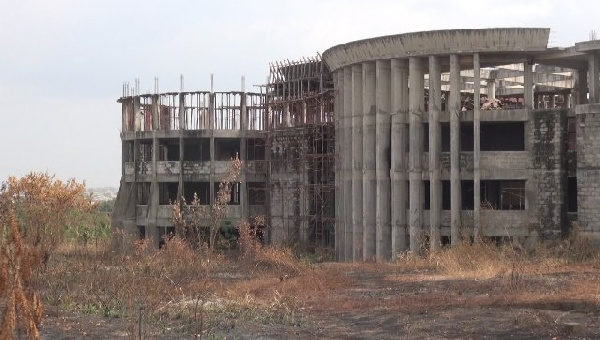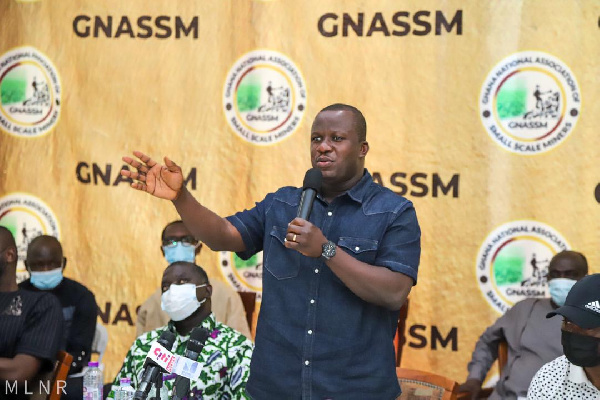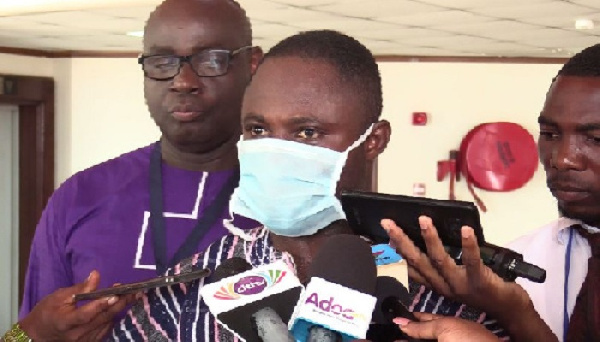GENERAL NEWS
School projects worth GHC21m abandoned

A Joy News Hotline Documentary has revealed that an estimated GH? 21 million oil revenue spent on some school projects remains largely undone and abandoned. In the most serious scenario, the original cost of the project is grossly inflated.
In the Ashanti region, a teaching hospital administration block, a project to address the large number of admissions into the Kwame Nkrumah University of Science and Technology (KNUST) School of Medical Sciences, has been abandoned after eight years.
The project originally estimated to be GH?6 million and later revised to about GH?18 million due to delays in completion, now costs GH?21 million.
Aside that is the Apedwa SDA Primary School. The six-unit Classroom Block in the East Akim District is almost sinking after the government invested GH?130,000 petroleum revenue into its construction.
The gaping holes in the library block are obvious. This is life-threatening to both students and their teachers.
That is not all.
In 2011, the government awarded a contract worth over GH?58,000 for additional classroom facilities for the Apenkro JHS in the Atwima Mponua district of Ashanti region.
Even though the building is yet to be completed, portions of it have developed cracks.
Assistant Head Master of the School, Amoako Sarpong George is worried about the slow pace of work.
Faustina Owusua, a pupil, laments on how students are sometimes attacked by snakes and lizards during lessons because classrooms have no doors and windows.
According to the school authorities, the project has stalled because government has not paid the contracted, a claim they attribute to the contractor.
The situation is no different from the Begoro Senior High School in the Eastern region.
In 2010, Moferg Company Limited was awarded a contract to rehabilitate the Science Resource Centre of the school.
The initial contract sum for the project was over GH?130,000. The Regional A.E.S.L. Consultant, Frimpong Gyamfi told the Public Interest and Accountability Committee that government has issued a certificate of payment of GH?52,765 to the contractor. This was on April 9, 2013.
The contract was expected to have been completed in four months. But, nine years on what is visible is a pale structure with no windows and doors.
Headmaster of Begoro Senior High School, Daniel Mensah reveals, the contractor abandoned the site after starting initial terrazzo works on the building.
Now Science education in the school is dead. Science experiment kits are now gathering dust in the school’s washroom.
They are appealing to government to urgently intervene to get the project completed.
In the Northern region, school authorities at the Bagabaga College of Education are facing a similar ordeal.
The low voltage of the school’s power source compelled government to award an upgrading of electrical power supply contract in 2013 to the Jondee Electricals. It was worth GH?248, 245.
But, at the time of going to press the transformer which was meant to be installed to step up the voltage supplied to the College of Education is sitting at the administrative block of the institution while the school suffers.
Joy News Kwetey Nartey concludes that in all his tour across the country, he didn’t come across a project funded with the oil money where the people were impressed with the value for money. Chairman of Public Interest Accountability Committee (PIAC), Dr. Steve Manteaw, believes more needs to be done.
According to an inspection report by the PIAC, over 50% of school projects funded by oil money show signs of serious deterioration in less than three years after completion.
The resultant effects have been more suffering for the ordinary people for whose purpose the Petroleum Management Act was passed.
According to this Act, up to 70 percent of oil proceeds go into the national budget.
The law further directs that these funds should be channeled to development in key sectors such as education, health and water infrastructure, among others.
But, a 2017 Project Inspections Report by PIAC revealed that 50% of all oil-funded projects in three regions – Upper East, Upper West and Northern – are now ghosts projects.
According to the 2015 Ghana Poverty Mapping report, these areas have the highest poverty rate. Poverty incidence is pegged at 70 percent in this part of the country.
Source: Myjoyonline.com








